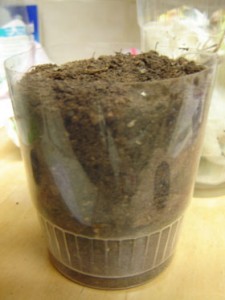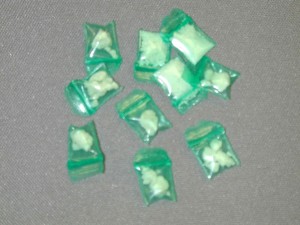One of the most shocking aspects of forensic science to me as I am not a scientist is the amount of discretion and choice that is exercised by the forensic analyst.
One of these areas is the difference between sampling and sample selection.


A good analogy to use is to suppose that you are tasked to discover what is in the contents of the soil in a one thousand acre forest. Would taking one 12 ounce cup full from one place necessarily represent everything that is in the soil of the one thousand acre forest?????
Perhaps the single biggest area of potential uncertainty and one of the areas that remains largely unexposed in the Courtroom are in the areas of sampling and sample selection. It is a very large potential source of error and at worst results in erroneous results.
ISO 17025 attempts to address these issues in Section 5.7 (Sampling). In all analytical measurements the analytical device very seldom weighs and/or measures the entire sample as it organically exists.
For example, in seized drug examination and testing using Gas Chromatography with Mass Spectrometry as the detector, this issue becomes very patent. In the lab, the technician starts with the whole sample, then a small portion of the whole is removed that one hopes in representative of the whole. Next, a solvent is typically applied such as methanol, ethanol or dichloromethane to derivative the sample that results in dilution of the original item. An autosampler is employed that takes one microliter which is one millionth of a liter of this derivatized or chemically altered and diluted sample to inject it into the injector port. Typically, a split injector configuration is used that results in a very, very small part of the microliter making it to the column with the remainder being vented out, not to be analyzed. Of this very, very small amount that makes it onto the column to be separated into hopefully unique analytes, only 1% or 2% of this separated material is ionized in the Mass Spectrometer to be further fragmented. The typical scan level of between 40-400 times per second results that in a condition that in order for the analyte to be detected at all in a timeframe of only 1/360th of a second when all of these conditions can be met to record a result. It is an engineering miracle at all that a result can be recorded.
Generally, only a very small part of the whole, called an aliquot, is actually tested by any analytical device. As a result, it becomes crucial and vitally necessary for the laboratory to ensure homogeneity in the aliquot tested. Right now, shockingly, most laboratories do not have a written policy or procedure or instructions that addresses this need for homogenization and/or no validated method to insure it.
It is this crucial difference between sampling and sample selection that needs to be exposed in the Courtroom. In essence, what happens in the laboratory when an aliquot is prepared is to exercise a massive amount of truly subjective discretion by selecting a “pinch of this” or a “section of that” from the whole unknown sample submitted for examination. It is clear that by doing such, even with a policy, procedure and instruction in place, massive representation errors with respect to non-colloidal mixtures can occur.
Sample selection in the case of trace evidence, for example, per ISO 17025 Section 5.7 would require a written policy, procedure, and instruction that are universally enforced, implemented and monitored by the laboratory down to the technicians at the bench. For example, which hairs or fibers out of many to collect or examine or what part of a stain to swath and examine is truly discretionary. These are examples of sample selection.
This is to be distinguished from sampling itself wherein there must be a written policy, procedure, and instructions to make sure that homogeneity of a sample, in fact, exists. A fine example of this would be blood and blood alcohol sampling. Without assurance of homogeneity in such a sample, random sampling error is introduced and inaccurate results may be reported.
Per ISO 17025 and ASCLD/LAB, there must be rigorous training as well as a plan and procedure in place for sample selection as well as sampling. If one were to obtain the policy, for example, of either sampling or sample selection, then there could and should be some very useful language contained that admits to this very fundamental source of subjectiveness and identifies sampling and sample selection as a large potential source of error.
In conclusion, sampling and sample selection is a large potential source for error and must be discovered by the Practitioner and exposed in the Courtroom.



